After having established itself many years ago as a leader in the domain of audiophile DVD and Blu Ray players, the brand Oppo has recently broadened its collection, by simultaneously releasing a top of the range Hi-Fi headphone, the PM-1, and the HA-1 headphone amplifier.
It is rather restricting to label the HA-1 an ?amplifier for headphones?, as the label is only based on its structure, which resembles a powerful little amplifier, and also by its equipment which goes far beyond all that we associate with this type of device.
The HA-1 is equipped with a DAC of 24-bit/192kHz, using an ES9018 socket. Both the amplification section and the inputs are processed in a symmetric mode, meaning that it can be used as a symmetric/asymmetric pre-amplifier. Its screen displays a host of information, and can work in VU meters or with a spectrum analyser. And we?re just getting started?
Qobuz invites you to explore this benchmark test and discover (with the help of numerous photos) the Oppo HA-1 headphone amplifier in detail.
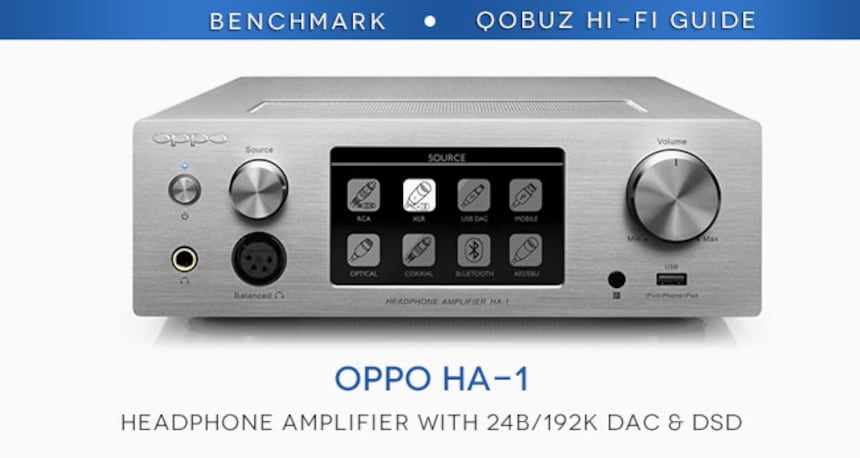
About the Oppo HA-1
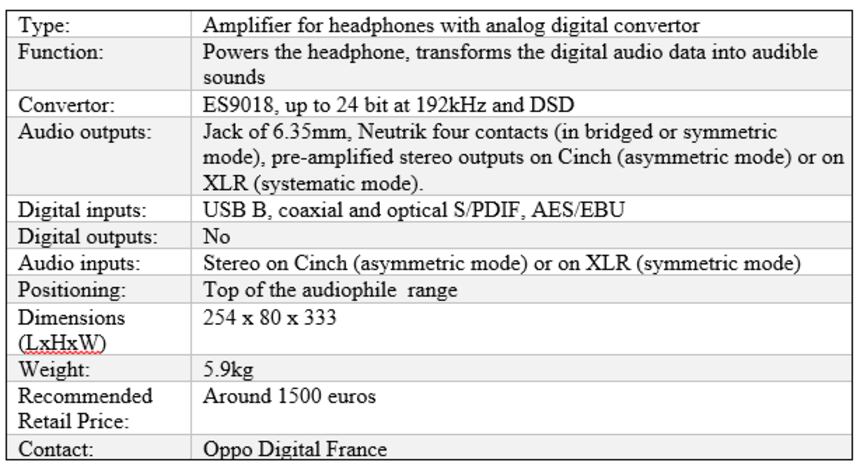
Presentation
Available in a black or silver finish, the Oppo HA-1 has an almost heavenly allure. Its' big central display indicates the input being used, the type of file being played (PCM or DSD), the sampling frequency, the bit rate, the amplifier gain (normal or high) and even the attenuation. This is normally displayed in full size, but is reduced to a line when you select the spectrum analyser of VU meters. You can select the source using the multifunction wheel on the left.
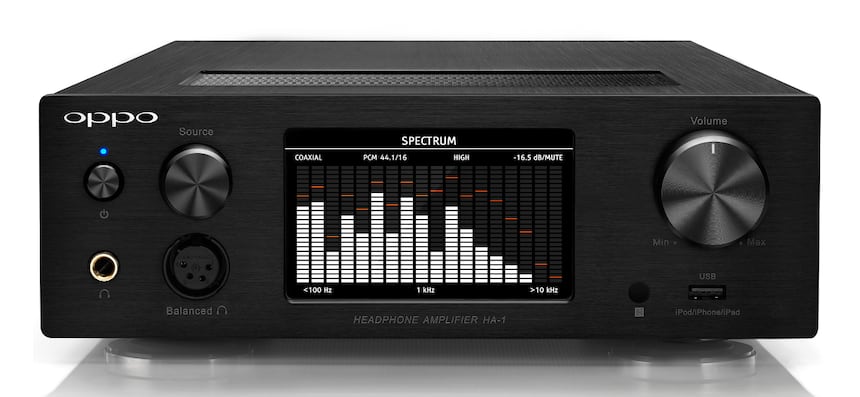
The volume button is located on the right overhangs a USB A input, which is used to connect iPods, iPhones or iPads. On the left there is the receptor window for the remote control. The standard headphone Jack of 6.35mm is found on the left under the power button, whilst the four contact Neutrik jack enables you to connect a working headphone using either a symmetrical or a bridged mode. This means that with each transducer caught between the outputs, two amplifiers are working in phase opposition.
It would have been a shame for such a beautiful device to have an ugly plastic remote. However fear not, as the amplifier has a very beautiful solid aluminium remote, which is just as delicate as the HA-1 is imposing.
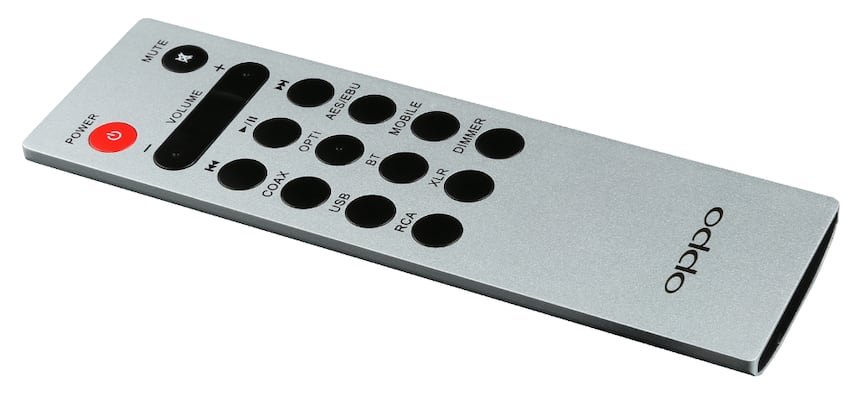
The HA-1 can also be controlled by an iPod or by an iPhone, an Android smartphone or an Amazon tablet.
Connectivity
The HA-1 has a vast array of connectivity possibilities. It contains four digital wire inputs, a USB B input for connecting to a computer, two S/DPIF inputs (coaxial and optical) and a symmetric input with a standard professional AE/EBU. A Bluetooth aptX connection with a small antennae completes the set. An analogical source can also be attached, in an asymmetric mode on Cinch or a symmetric mode on the XLR sockets.
The signal can also be dispersed with a variable (pre-out) level, using two modes to directly connect to a power amplifier or amplified speakers. Two trigger sockets enable you to control the power of the other devices that are also present.
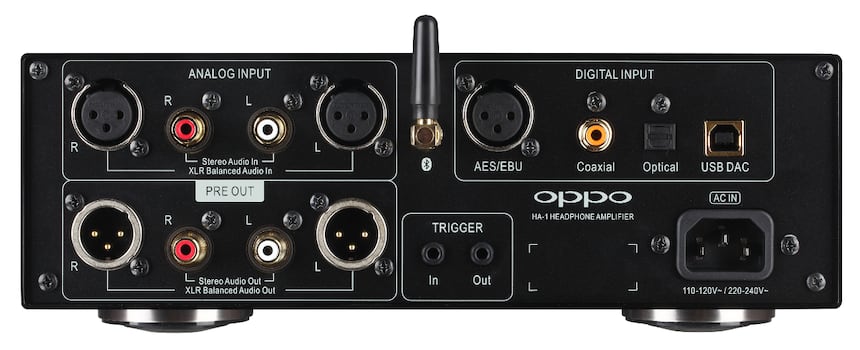
Manufacturing
The manufacturing of the Oppo HA-1 amplifier for headphones with DAC is truly outstanding. Everything is very well aligned ?as if on parade?, and carefully implanted, despite the vast amount of components involved in making this beauty tick.
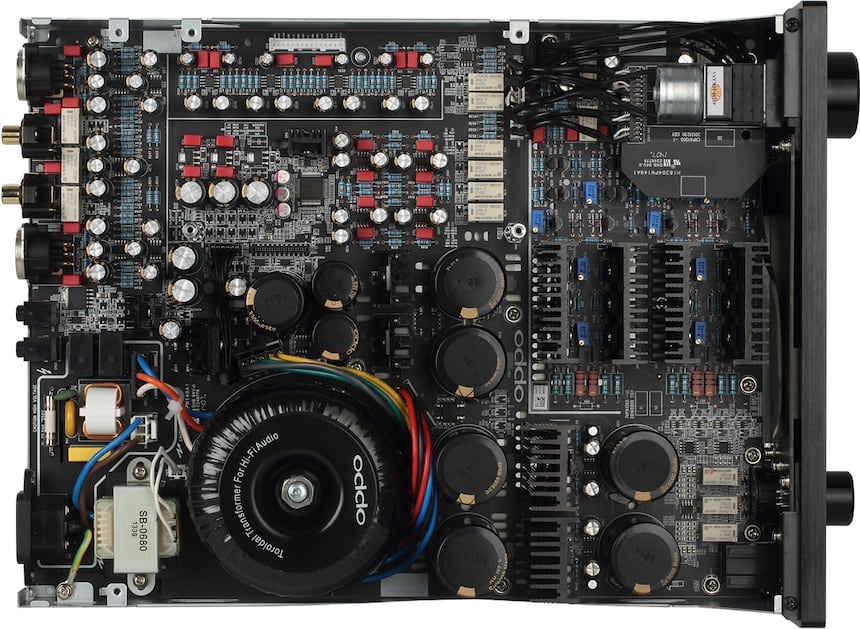
In the image below we take a closer look at the electronics of the HA-1, examining the functional block and translating the captions.
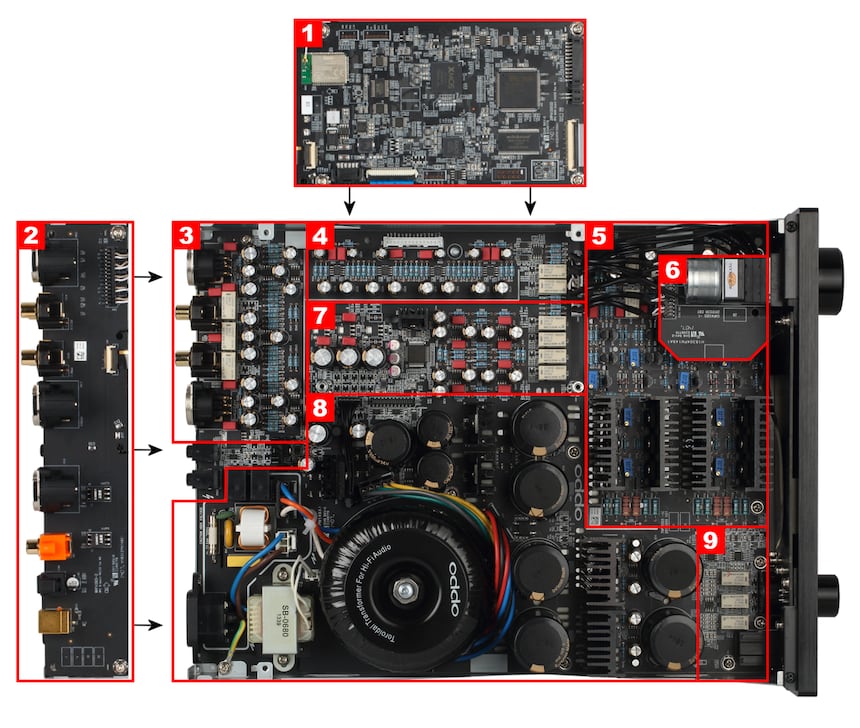
1 - Principal controller and USB interface 2 - Circuit of digital and analogical inputs 3 - Buffers for audio outputs and connectors 4 - Buffers for analog audio inputs 5 - Class A headphone amplifier with discrete components 6 - Analog volume control (motorized potentiometer) 7 ? DAC Sabre32 Reference ES9018, selection of inputs and gain control 8 - Linear power supply with torodial transformer 9 ? Protection circuits
Power Supply
Oppo did not cut back on means of powering the HA-1. This is also the case, as the amplification stages for the headphones are defined as class A, and thus give off a lot of heat.
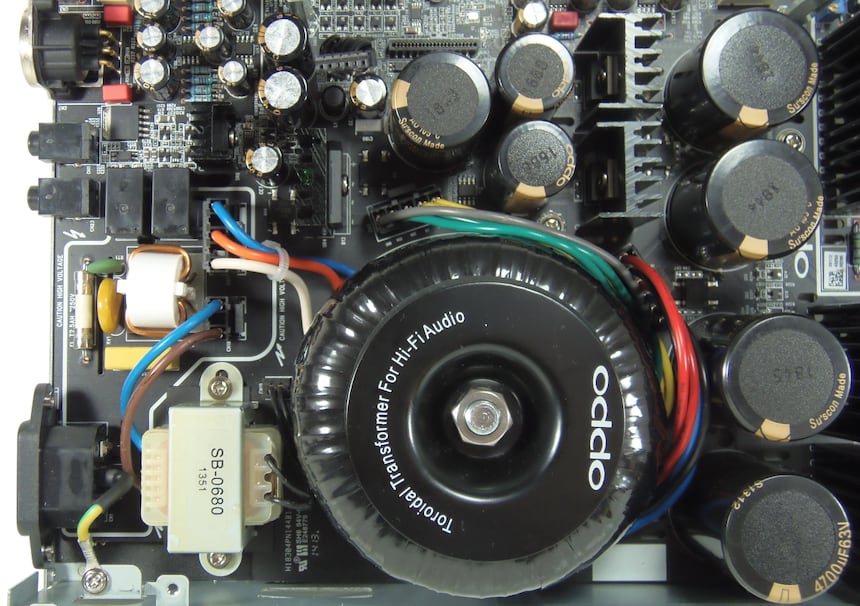
At the heart of this hefty power feed, a very beautiful torodial transformer is preceded by a serious filtering system of condensers and selfs. This also protects the device against inevitable power surges of a suppressor (thunderstorms do happen!). On the side there is a little transformer for a standby power circuit.
The condensers work as filters for the various voltages. They are manufactured according to specifications and are branded with the Oppo mark.
Thus one can count, alongside the power feed of the digital circuits, two condensers of 2200 ?F/35V and a 3300 ?F/35V. As for the analogical part there are two condensers of 4700 ?F/63V and four of 4700 ?F/35V. And these are only the most important condensers?
The voltage of the input and output analog circuits benefit from the regulated and independent amplification voltage. The voltage of the power feed are stabilised by the integrated regulators LM317 and LM337 fitted to radiators. These stabilities are very important to avoid any deviation in the polarisation of the amplifiers? transistors.
Analog audio inputs and outputs
The inputs, like the analog audio output, can be placed in an asymmetric or symmetric mode.
The analogical outputs and digital inputs share the same card. The card employs the high performance Semiconductor LME49724 double operational amplifiers, which are ?Optimal for High Fidelity? (as the manufacturer states). The resistances come from models with a metal layer, which has a tolerance of 1%. This provides a very good stability, whilst the decoupling condensers contain plastic layers.

The output stages also use the operational double amplifiers LME49724 (one for the asymmetrical output and two for the symmetrical outputs). It is also important to note the presence of two other operational High Fidelity amplifiers of a ?surprising? performance; the LME4562 model manufactured by National Semiconductor. Oppo seems to have worked its way to the top of the range of High Fidelity operational amplifiers.
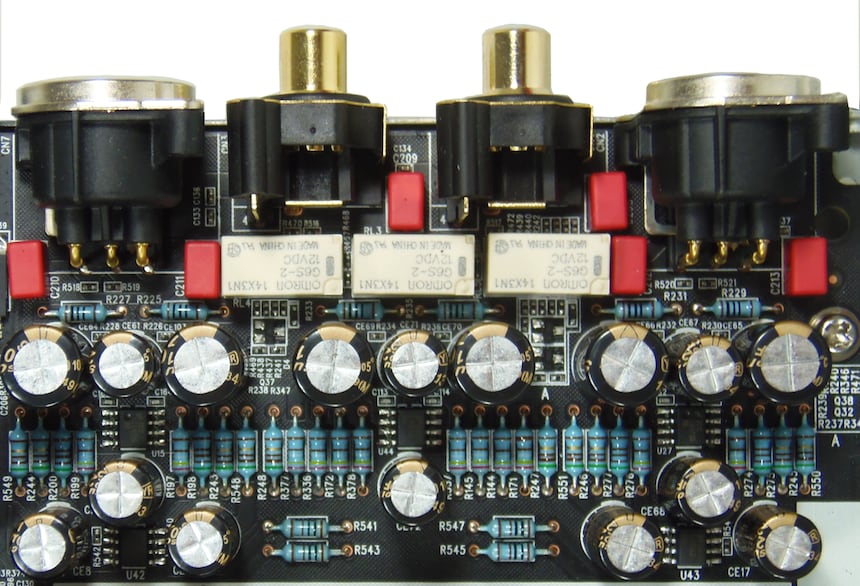
Volume control
Oppo has chosen a volume control by the motor potentiometer Alps. However, the audio signals do not go through the tracks of this potentiometer. Rather, its angular position is detected by the micro controller and converted into an attenuation at the electronic level, which is temporarily indicated on the display.
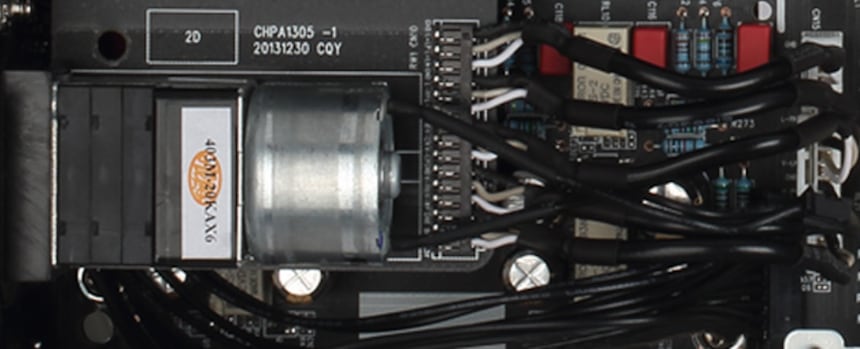
Oppo stipulates on the official site that it is normal to have slight fluctuations in the value of this attenuation on device?s display, during the manipulation of the volume. Similarly, the website recommends to press briefly on the volume button of the remote control to stop this phenomenon.
Amplification
The amplification stages only occupy around a quarter of the total surface area. This is because the device is entirely made up of discrete components, whilst its four unities enable it to work in the bridged mode.
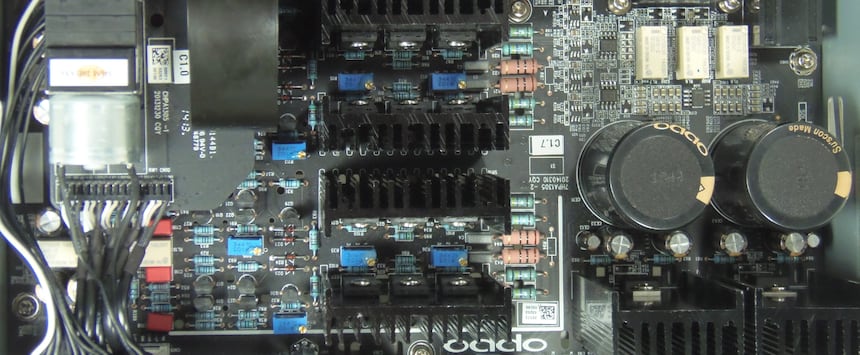
The input stages use the transistors KSC2316 and KSA916. These use epitaxial technology, which is highly reputed for its musicality, and designed for the driver audio stages. Strictly speaking, these power stages utilize the Sanken models 2SA1725 and 2SC4511 (a specialist of transistors and audio power modules), each capable of delivering a power of 30W.
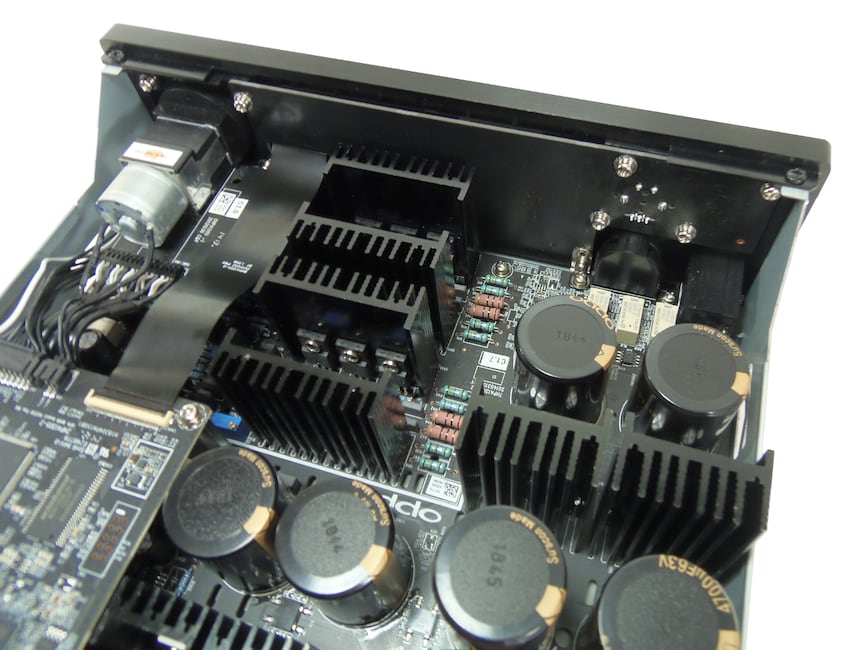
These class A transistors are mounted on a radiator along with another Sanken transistor, a model 2SC4883. This uses a temperature sensor to stabilise the heat, and thus to avoid all the destructive thermal surges that are inherent in bipolar transistors.
You will notice that all these resistances are models with a metal layer of 1% tolerance, and that the polarisations of the input stages, like the power stages, are adjusted with precision, thanks to the multitour trimmers.
The outputs of these amplifiers are then directed across resistances of very small value towards the connection that transports them to the headphone socket. Just beside the connection there is a protection electronic, where there is a double operational RC4558 amplifier and two comparators with the voltage LM393.
Digital Card The digital card is generously equipped with integrated circuits of a very large range (VLSI), among which two XMOS multicoeur controllers, one referenced 16U7C10 and able to treat 1000 mega instructions per second (1000 MIPS) and dedicated to the treatment of USB signals. The other is referenced 6U6C5 (500 MIPS), which controls the management of the electronics and the display.
One also notes the presence of an Actel ProAsic3 circuit, containing 125,000 programmable ports (FPGA). The digital signals coming from the inputs S/PDIF are supported by the Wolfson WM8805 circuit, like those coming from the Bluetooth receptor (aptX compatible), Blue Giga WT32-E (on the top left of the photo) and from the USB interface.
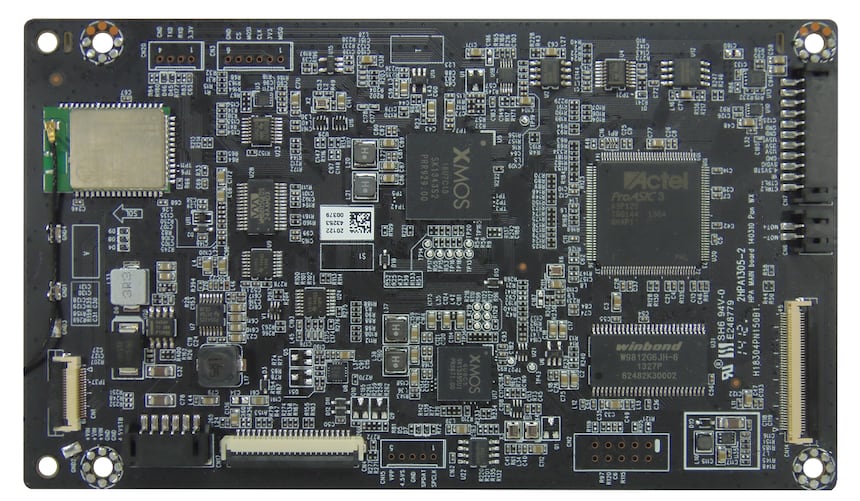
Digital and Analog conversion
The device contains an ES9018 digital analog convertor from the American manufacturer ESS, which ensures the digital analog conversion. This precedes a conversion of all the digital signals of 32bit, thanks to the Hyperstream? processor. This contains eight by four convertors used on each channel, in order to improve the signal on the noise 6dB.
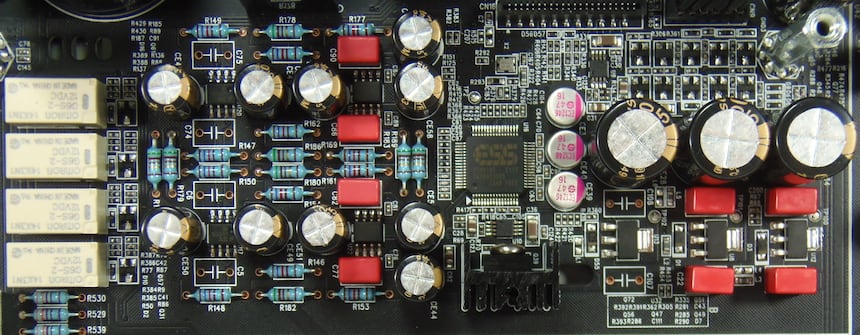
The summation of the signal outputs from the ES9018 chip is confined to the operational amplifiers of the LME4562 model. The filtration is built around the effective LME49724, accompanied by a precision resistor, and by capacitors with a plastic covering.
Usage, listening
With a PC, it is necessary to install drivers to use with the USB Audio 2.0. They are downloadable on the Oppo sight by clicking on the link here.
The sound restitution procured by the Oppo HA-1 is of a very high quality, and its' Jack output power appears to be in line with that of the driver. The headphones lack efficiency, like several orthodynamic models, as concerns the excellent Qobzisism Oppo PM-1.
In this way we have been able to appreciate the beautiful sound reproduction of the Fantasia on British Sea Songs by Henry Wood, which the Qobuz Hi-Fi Guide is particularly fond of.
However we are all the more attentive, as it does not use a microchip that keeps the signal in native mode. This is often the case with these devices, and is perhaps why we keep coming back to this work.
We thus listened very attentively to this track while alternating the Oppo 100% restitution. In other words, we carried out the conversion using the ESP018 chip. Since the analog input attached to the DAC equipped with a PCM5102 convertor treats the signals in a native manner, we did not need to use additional filtering.
As already mentioned, the sound restitution of the 100% Oppo mode is extremely beautiful, although it does ?give out? a little more in the high frequency range than in the native mode. Although this is a matter of taste, it is an undeniably nice feature addition.
Whatever it REALLY is, the HA-1 was presented as being an amplifier for headphones. Its amplification section skilfully serves this non-native conversion, as the native conversion comes from another DAC.
When listening to Metronnomy?s track The Upsetter from the album Love Letters, it is not necessary to increase the volume to hear the brilliant guitar chords caressing your eardrums, or to perceive the power of the bass, that creates a spattering noise, reminding you of the the vinyl surface.
The sound results are also very good when connected with Bluetooth aptX, with even the highest being rendered with great definition.
We have searched in vain for information with Oppo, as to whether the digital analog convertor of the HA-1 is DSD64 and DSD128 compatible...
We will now present the settings for the Foobar2000 and the DSD (simple and double) reading in its native mode.
-Click on the tab Library > Configure > Output > ASIO
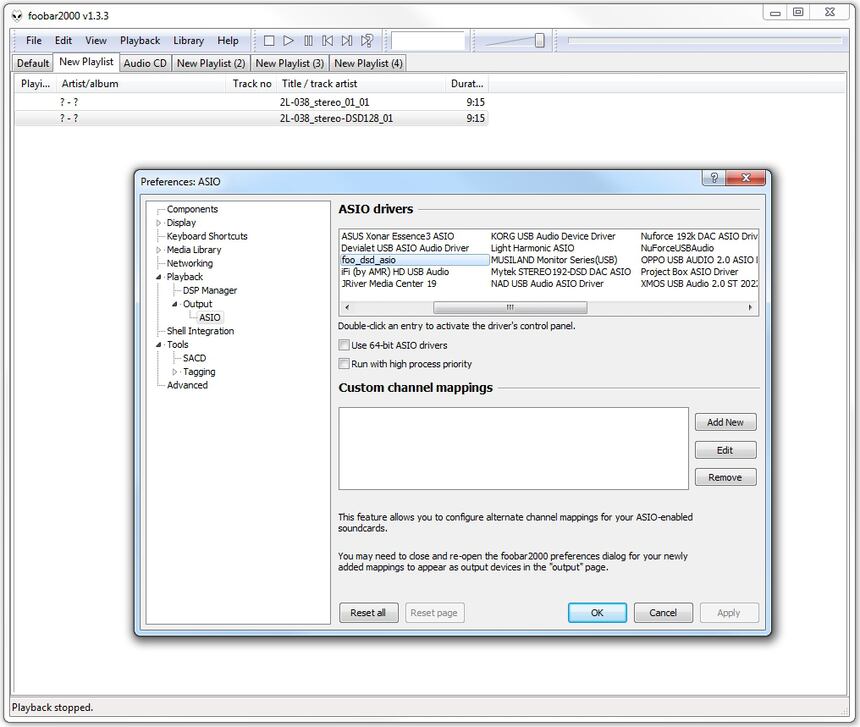
-double clic on foo_usb_asio -in the window which opens choose OPPO USB AUDIO 2.0 ASIO Driver and DoP Marker 0x05/OxFA, then shut this window
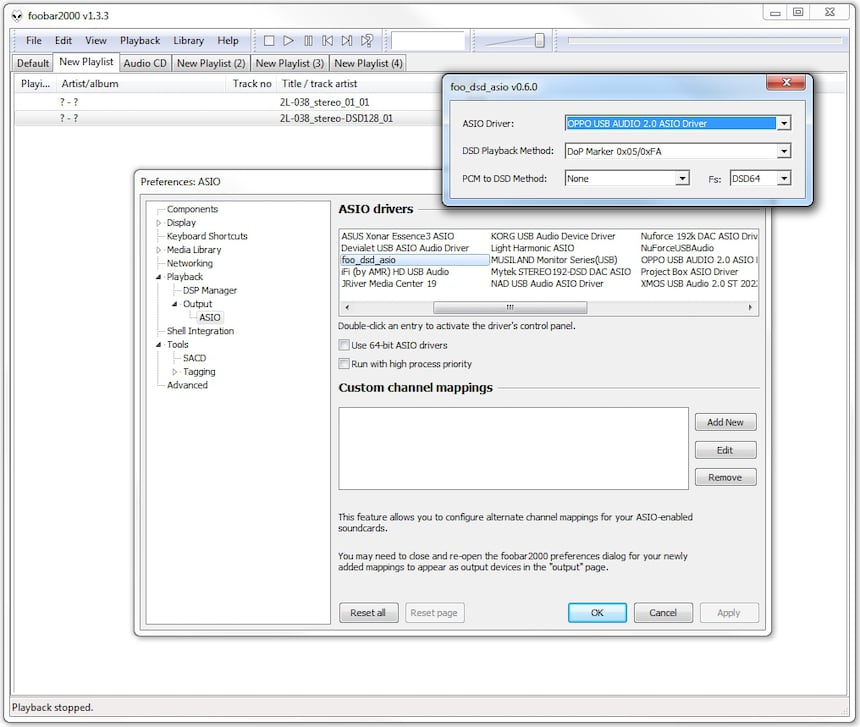
-return to Output and choose ASIO: foo_dsd_ASIO
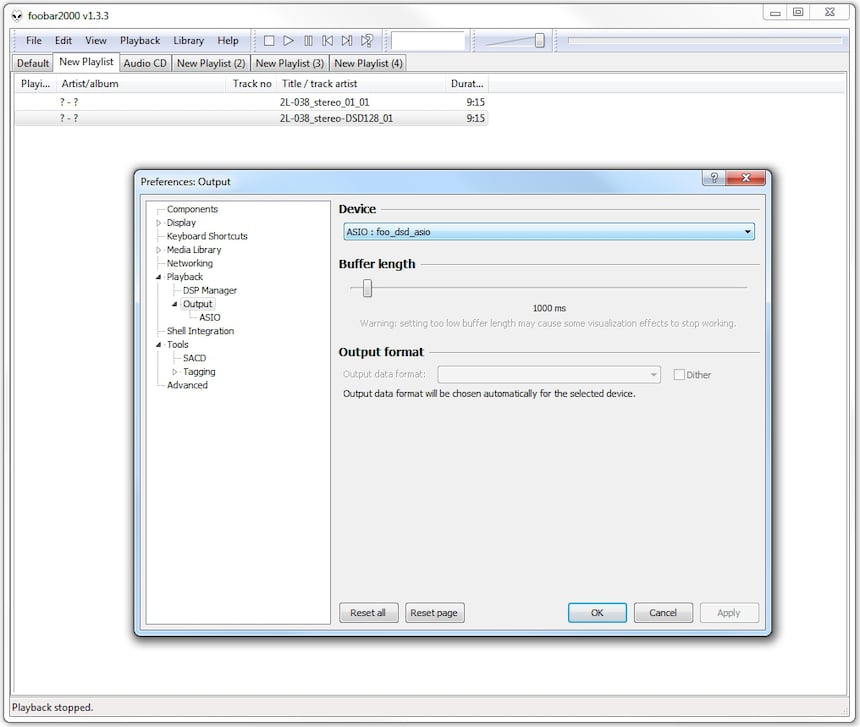
- go into Tool > SACD and choose the dame settings as are on the image, the click on OK
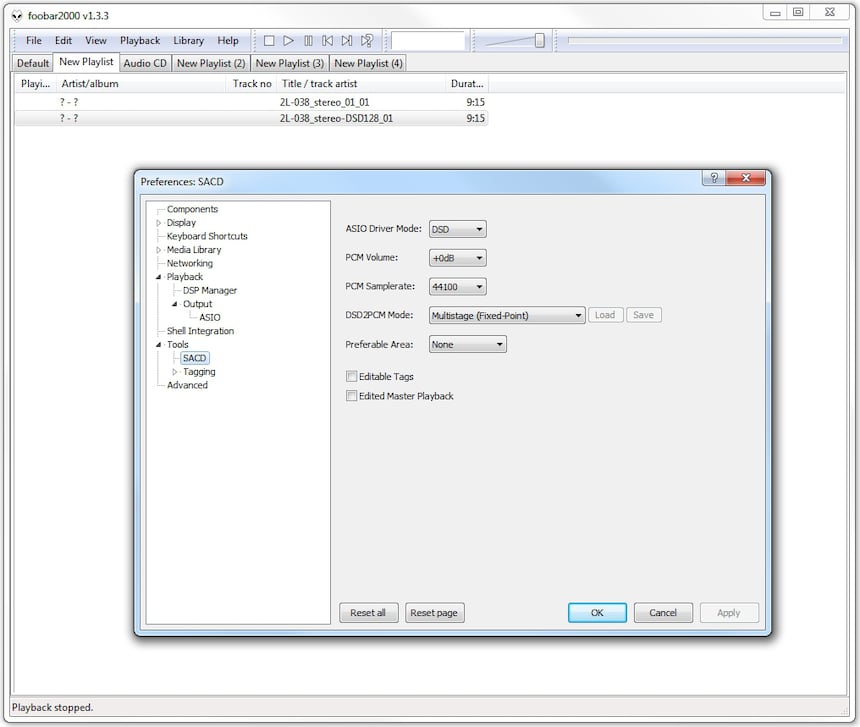
- the DSD64 and DSD128 files can be read

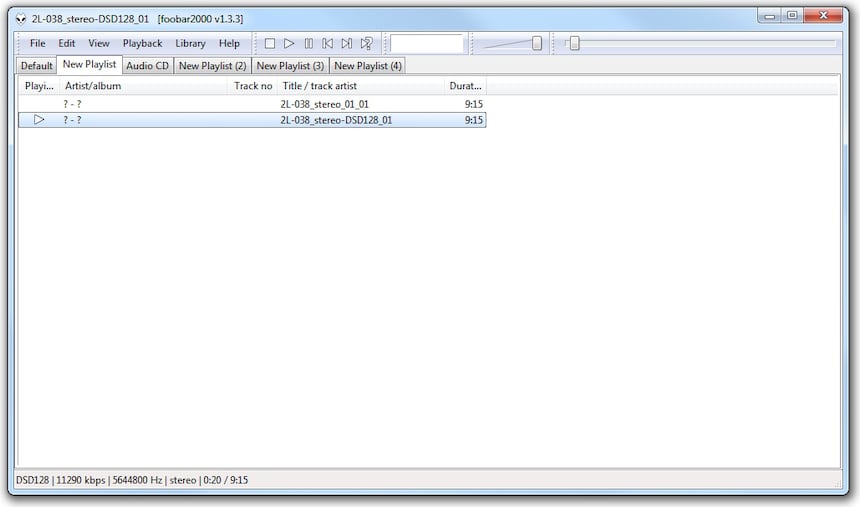
The results are beyond our wildest dreams, with an excellent level of sound reproduction, where finesse and softness compete to create a wonderful listening experience.
In conclusion, with its HA-1, Oppo proposes an amplifier for headphones benefitting from a first class design, integrating an efficient DAC. As a standard output would not produce enough power to feed the headphones, the amplifier is equipped with a standard headphone output and a branched stereo output, providing fantastic sound results, whilst it can also act as a preamplifier. A very good device, both to look at and to listen to.
Manuel de l'utilisateur (User Manual)
Reading Capacities
Oppo HA-1
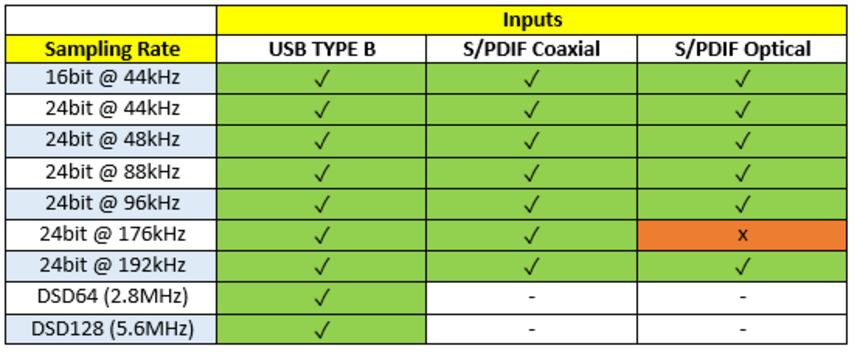
If you are a manufacturer, importer, distributor or actor in the domain of sound reproduction and you wish to contact us, please do so using the following address: newstech@qobuz.com
If you are passionate about our Hi-Fi Guide and you wish to contact us, please do so using the following address: rubriquehifi@qobuz.com
